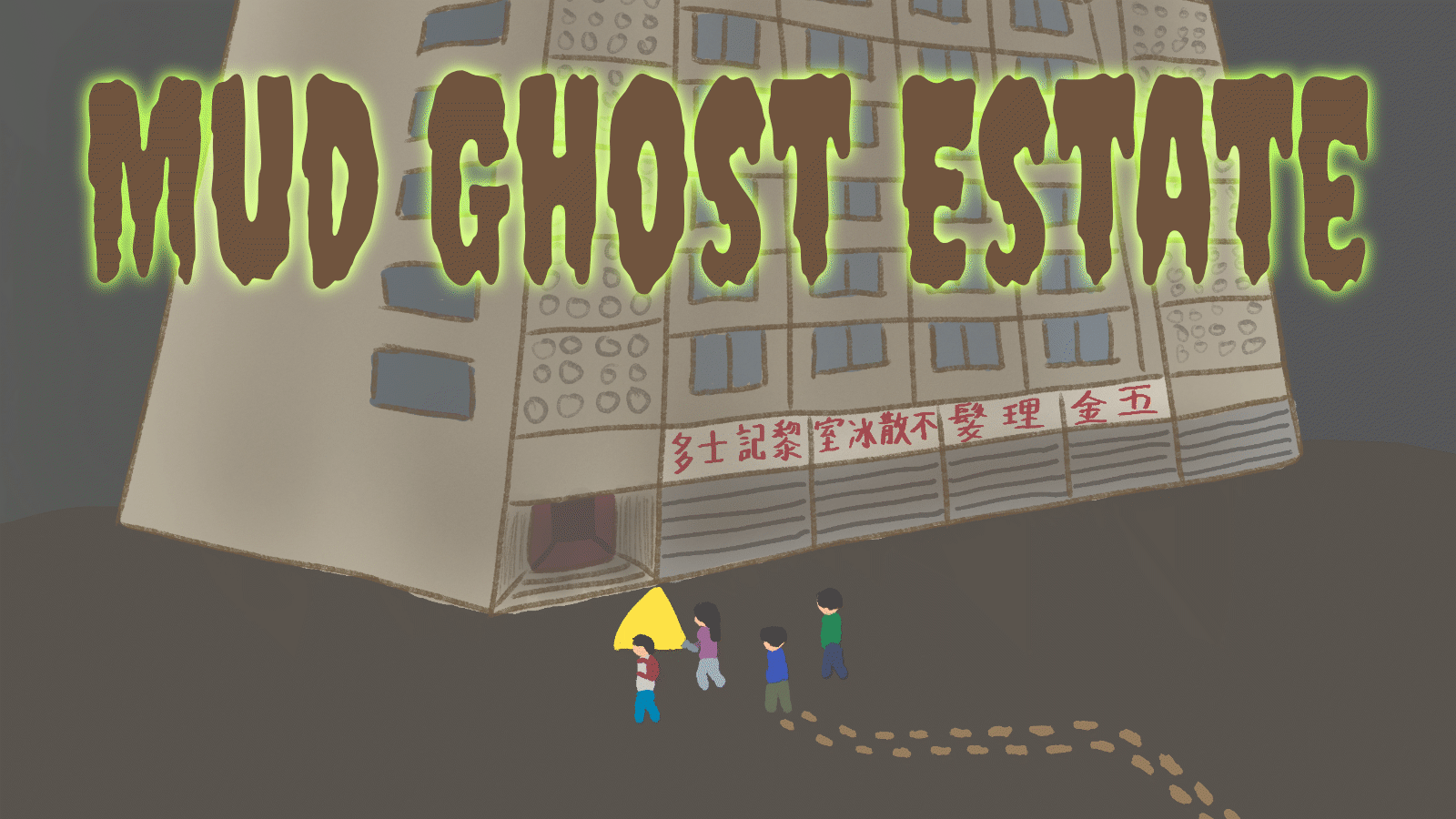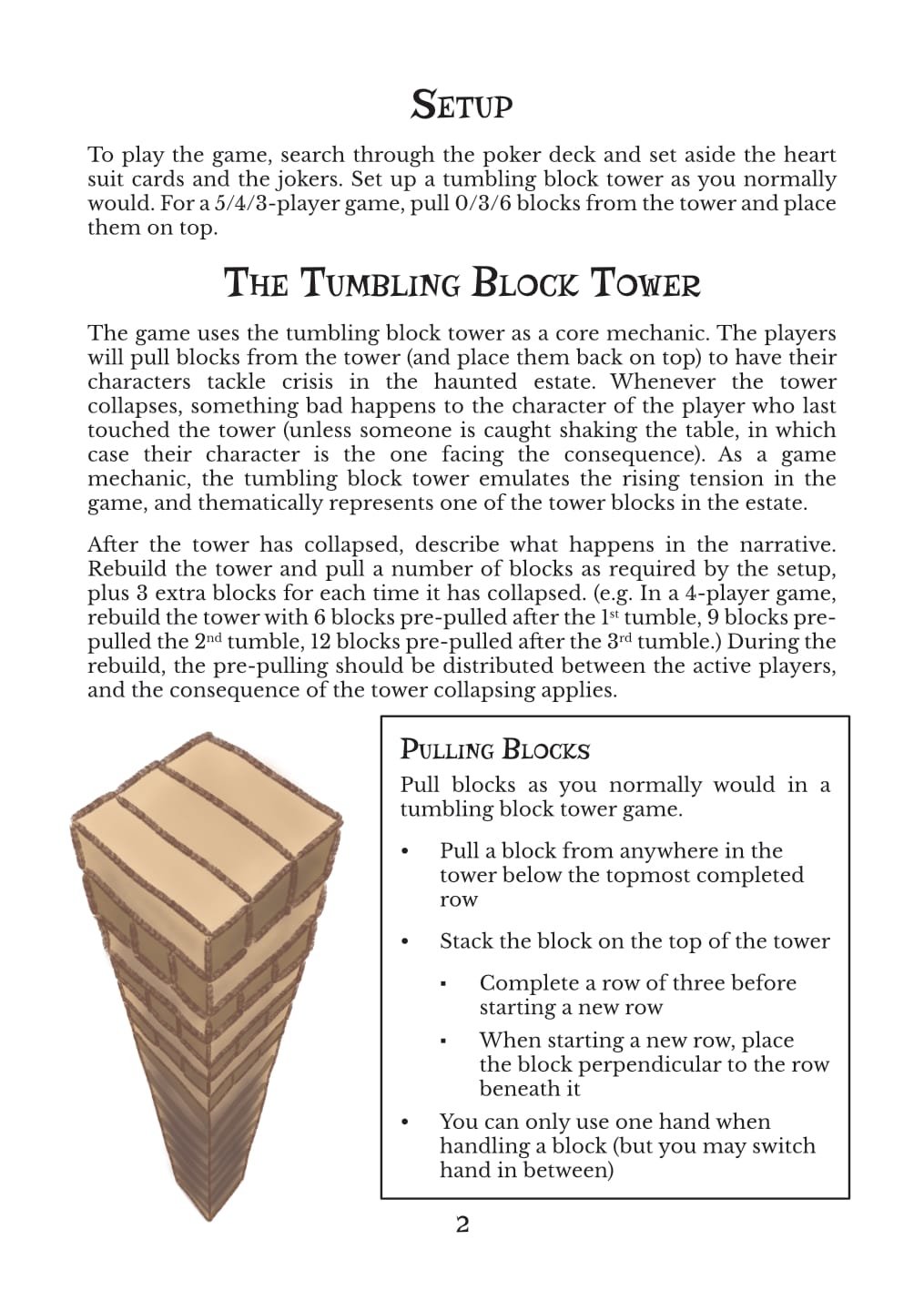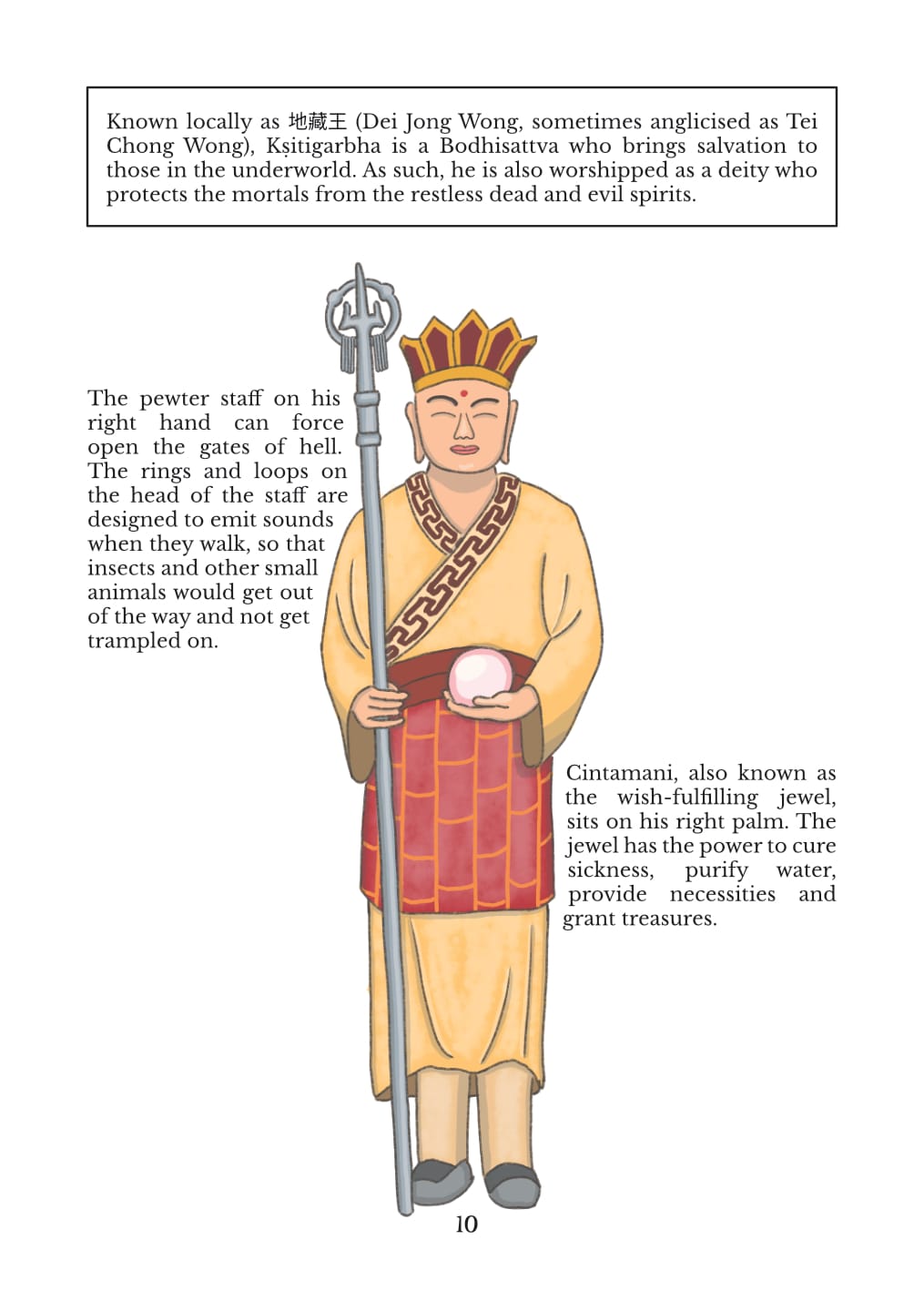Mud Ghost Estate—Spooky Folklore-inspired TTRPG
Tumbling block tower and playing card-based TTRPG inspired by the folklore and urban legends of Hong Kong

Mud Ghost Estate by Wing Hang Arthur is a spooky tabletop role-playing game inspired by Hong Kong folklore and urban legends. You play as a group of daring teenagers exploring a haunted public housing estate in the 90s.
Mechanics
The game is for 3-5 players, played with a tumbling block tower (e.g. Jenga) and a deck of playing cards. When exploring the haunted housing estate, the players pull cards to reveal encounters, and pull blocks from the tower to resolve crises. If the tower tumbles, tragedy befalls the character.
At the halfway point of the game, one of the player characters is secretly revealed to be an undead impostor who wants to swap places with the living.
Play to see if you can escape Mud Ghost Estate.
The game includes variant rules for solo play, and for replacing the tumbling block tower with ten-sided dice.

Folklore, Culture & History of Hong Kong
Folklore often reflects a region's culture and history. The game draws inspiration from folklore and urban legends surrounding one of Hong Kong's early public housing estates that was constructed in the 60s and redeveloped in the 90s.
Urbanisation happens as people move from rural areas to cities for opportunities and better quality of life. As a port city, Hong Kong reached a population of 1.6 million at the beginning of 1940s before its occupation by Imperial Japan during WWII. For three years and eight months, citizens lived under military rule, a lot of people were forcibly deported or emigrated out of the city, and many of those who remained faced starvation. The city's population shrank to 600 thousand by the end of the war. In the decades following WWII, Hong Kong experienced a population boom due to an influx of immigrants from the mainland and a high birth rate, reaching twice the pre-war population by the early 1960s. Many people lived in shanty towns with poor fire safety, and a fire can quickly spread between the shacks. Between the 50s and early 60s, over a hundred thousand people lost their homes in shanty town fires. In response, the government built public housing to resettle those who lost their homes, which became a more general public housing project as time went on.
Hong Kong's geography is hilly with steep slopes, and its early development was concentrated around the relatively flat coastal regions surrounding the harbour. The new tower blocks in previously undeveloped hilly regions come with unanticipated problems. In the 1970s, landslides caused by heavy rainfall claimed over a hundred lives in densely populated areas. From the 80s onwards, better knowledge of civil and geotechnical engineering have reduced the risk of landslides in urban areas, and residents can be evacuated ahead of time if a landslide does occur.
The real-life Sau Mau Ping Estate is the inspiration behind the fictional Mud Ghost Estate. The public housing estate was built to accommodate the rising population of Hong Kong in the post-WWII era. It was hit by not one, but two landslides. Many of the old tower blocks in the estate were demolished in the 90s to be redeveloped. There are a lot of folklore and urban legends surrounding Sau Mau Ping Estate. There is record of a cemetery in the area before the estate was built and it might have been used as a mass grave for those who were killed by the Japanese army in WWII. There is an urban legend that those who were killed in the landslides are coming back to haunt the living. In one folk tale, the Kṣitigarbha statue from a small temple came to life to protect a couple of the residential blocks from a landslide. An once-popular cinema in Sau Mau Ping is rumoured to be haunted, with reports of ghost sightings.

Ghosts and Trauma
Why do ghosts exist in stories? Ghosts are made up by the imagination of those who are alive. In East Asian horror stories, those who died tragic deaths would come back as ghosts to haunt the living. (The focus is on how they died and not how they have lived, contrasting undead villains in Western horror who are often evil when they are alive.) Perhaps ghosts are just our past trauma coming back to haunt us. When people live through tragedies that are too great for the mind to comprehend, they make up ghost stories. Perhaps the manifestation of ghosts of WWII is the city's collective survivor's guilt. Even decades after on, the ghosts remain, passing from one generation to the next like epigenetics.
In Mud Ghost Estate, the player characters explore the estate during the Yulan Festival, aka the Ghost Festival, and they are transported into an otherworldly version of the estate inhabited by ghosts and echoes of the past. The hauntings in the estate are therefore a representation of the traumas experienced by the previous generations, who want to entrap or possess the player characters.
Mud Ghost Estate is a submission to Folklore Jam 2024, and you can find the game on itch.io: https://aryl-ether.itch.io/mudghost





